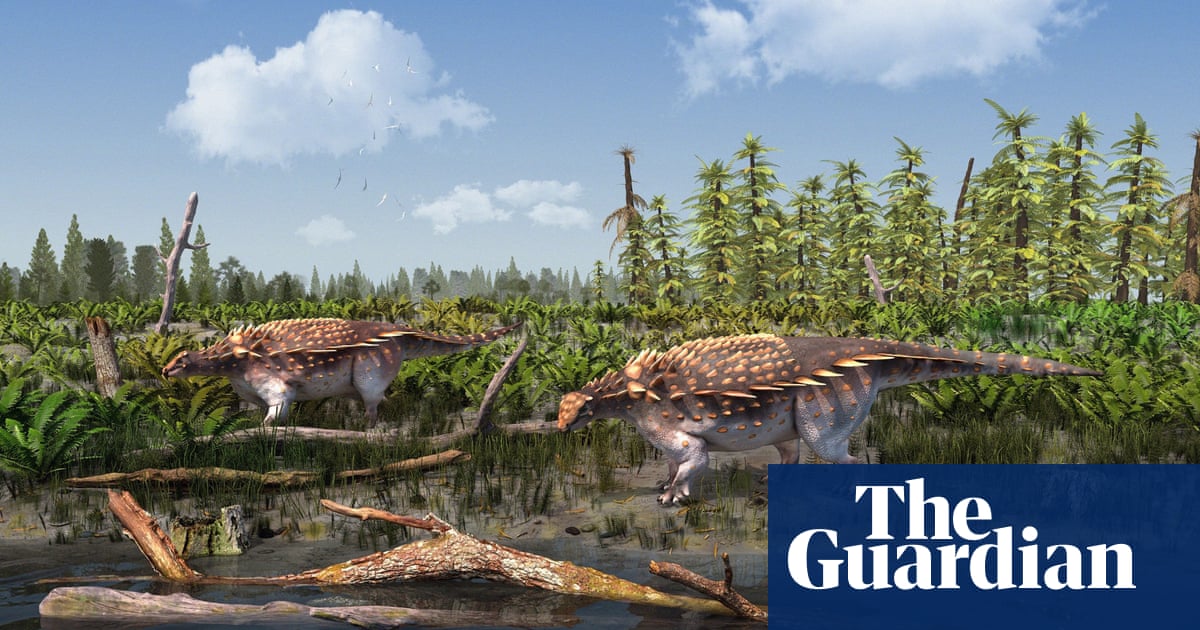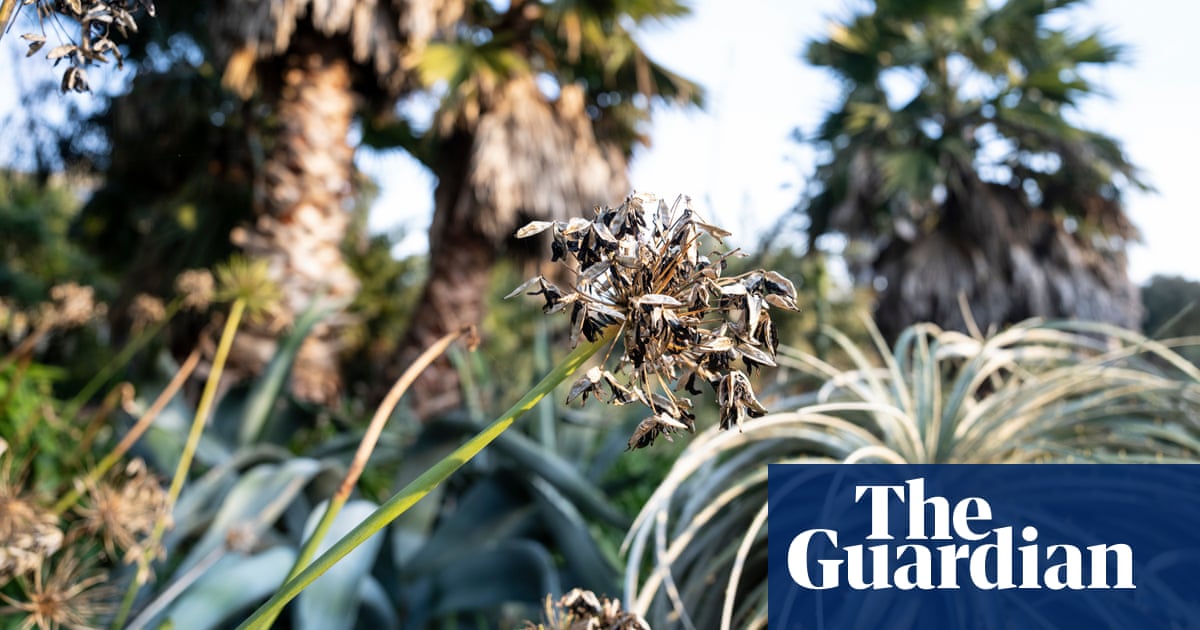
The fossilised remains of a dinosaur, nicknamed “the horned crocodile-faced hell heron”, have been unearthed on the Isle of Wight.
The 125m-year-old predator had a 9 metre-long body, powerful claws, a gigantic skull covered in horns and bumps, and long crocodile-like teeth. The fearsome creature lived on the fringes of ancient floodplains where it would have lain in wait for aquatic prey, research suggests.
Scientists say the discovery, along with the skeleton of a second species at the same site, offers unique insights into how the Spinosauridae family of dinosaurs made the transition from land-dwelling to semi-aquatic predators over a period of tens of millions of years.
“This is a really exciting piece of news for the dinosaur world as these are some of the most charismatic and enigmatic predators,” said Neil Gostling of the University of Southampton, who supervised the project.
The new finds also cemented the Isle of Wight’s status as the best place in Europe to find dinosaurs, he added.
The first specimen has been named Ceratosuchops inferodios, which translates as the “horned crocodile-faced hell heron”, with the second specimen, Riparovenator milnerae, named “Milner’s riverbank hunter”, in honour of the late British palaeontologist Angela Milner.
During the Early Cretaceous period, the Isle of Wight was a floodplain with a Mediterranean-like climate, balmy forest and rivers containing fish, sharks and ancient crocodiles. Scientists believe the two dinosaurs would have lived at the margins of the waterways and probably hunted in the water and on land.
The “hell heron” fossil revealed a long muzzle and cylindrical teeth, rather than the sabre-like blades that are normally seen in terrestrial carnivores such as T rex. This anatomy suggests it may have hunted like a modern-day heron, standing motionless in the water before plunging its jaws downwards at the sight of prey, according to the analysis published in the journal Scientific Reports.
“The fact they have these crocodile-like teeth, which are good for catching slippery fish, means we suspect they were standing in the water and using their jaws to hunt,” said Gostling.
Another possibility is that the dinosaurs would have waited, semi-submerged, like a crocodile, or used their large claws to hook fish out of the water like a bear.
The haul of bones were discovered on the beach near Brighstone over a period of several years by fossil collectors Brian Foster, from Yorkshire, and Jeremy Lockwood, a retired GP who lives of the Isle of Wight and is now doing a PhD in palaeontology. The two independently donated their finds to the local Dinosaur Isle museum.
“We realised after the two snouts were found that this would be something rare and unusual,” said Lockwood. “Then it just got more and more amazing as several collectors found and donated other parts of this enormous jigsaw to the museum.”
The only spinosaurid skeleton previously unearthed in the UK belonged to Baryonyx, which was initially discovered in 1983 in a quarry in Surrey. Most other finds since have been restricted to isolated teeth and single bones.
The new fossils will go on display at Dinosaur Isle at Sandown.












